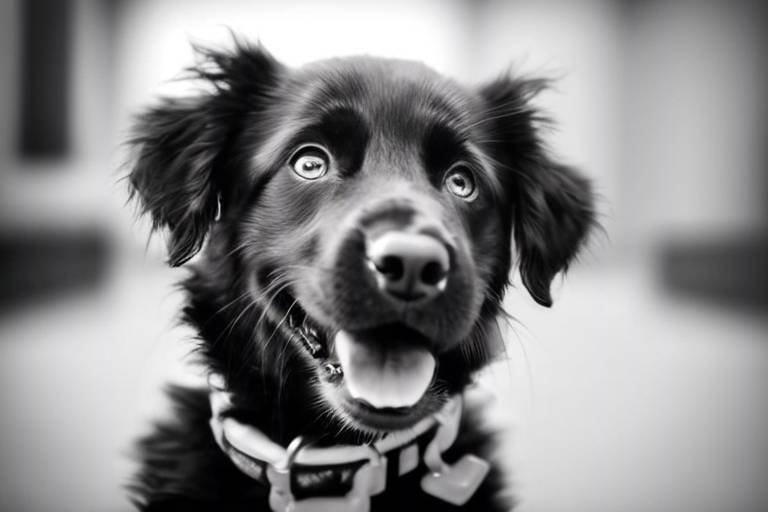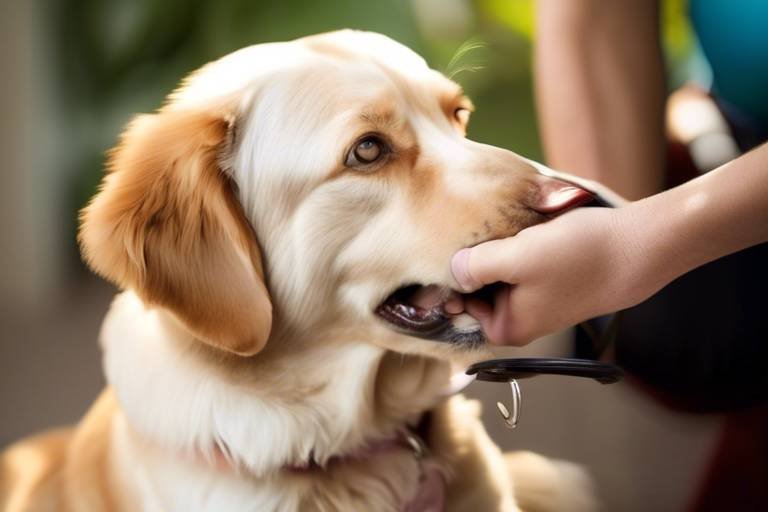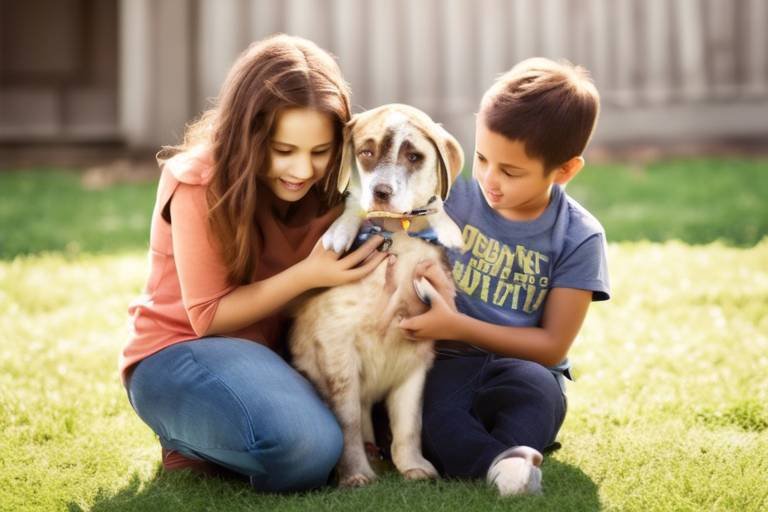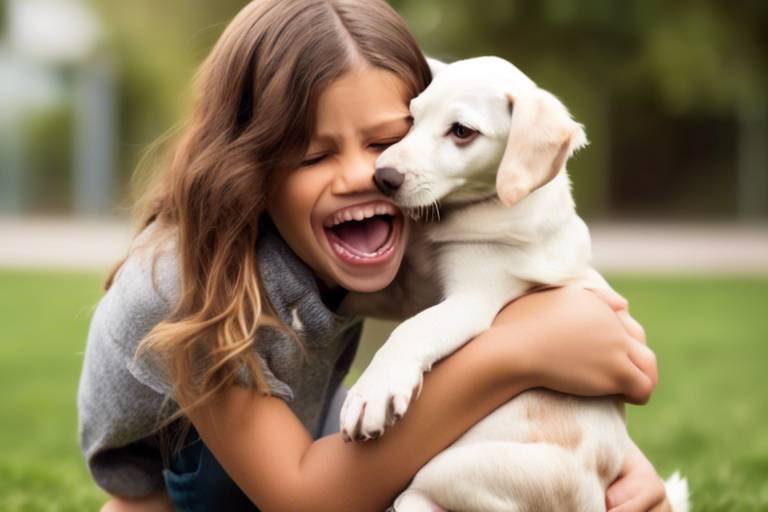The Importance of Training for Rescue Dogs
When it comes to rescue operations, the role of rescue dogs cannot be overstated. These incredible canines are not just pets; they are skilled professionals trained to save lives. Imagine a scenario where a natural disaster strikes, and people are trapped under rubble. In such critical moments, the effectiveness of a rescue dog can mean the difference between life and death. This is where the importance of training comes into play. Training not only enhances their ability to perform under pressure but also ensures their safety and the safety of their handlers.
Structured training programs equip rescue dogs with a variety of essential skills, allowing them to respond appropriately in various emergency scenarios. Whether it's locating missing persons or navigating through hazardous environments, a well-trained rescue dog is a reliable partner. The bond between the dog and its handler is also strengthened through training, leading to better communication and teamwork during rescue missions. In this article, we will explore the different types of training that rescue dogs undergo, the benefits of such training, and how it ultimately leads to more successful rescue operations.
In the world of rescue operations, every second counts. A dog that has undergone rigorous training will not only be more effective but will also help to instill confidence in their handlers. These dogs are trained to remain calm and focused, even in the most chaotic situations. By understanding the critical role of training, we can appreciate how these furry heroes contribute to saving lives and providing comfort in times of distress.
Training equips rescue dogs with essential skills, enabling them to perform effectively in various emergency scenarios. This section discusses how structured training enhances their performance and reliability during rescue missions.
Different types of training are essential for rescue dogs, including obedience, scent detection, and agility training. Each type plays a unique role in preparing dogs for specific rescue tasks.
Obedience training is fundamental for all rescue dogs. It ensures they respond promptly to commands, which is crucial during high-stress situations encountered in rescue operations. A dog that can follow commands without hesitation is invaluable when every moment matters.
Teaching basic commands like sit, stay, and come is vital for establishing control over the dog. These commands form the foundation of all further training. For instance, when a handler shouts "stay," a dog that has mastered this command will remain in place, allowing the handler to focus on the task at hand without worrying about the dog's movements.
Advanced obedience techniques enhance a dog's ability to perform under pressure, making them more reliable partners during complex rescue scenarios. Techniques such as distraction training help dogs learn to ignore distractions, which is essential in chaotic environments. This level of training transforms a good dog into an exceptional rescue partner.
Scent detection training is essential for search and rescue dogs, enabling them to locate missing persons or detect specific scents in various environments. Dogs have an extraordinary sense of smell—up to 100,000 times more sensitive than humans—which makes them unparalleled in their ability to track scents.
Agility training helps improve a rescue dog's physical fitness and coordination, ensuring they can navigate challenging terrains efficiently during rescue operations. Just like athletes, these dogs need to be in top shape to perform their best.
Using obstacle courses in training helps dogs develop their agility and problem-solving skills, which are crucial for successfully maneuvering through debris or difficult landscapes. Imagine a dog leaping over fallen branches and weaving through tight spaces—this training prepares them for real-life rescue scenarios.
Regular physical fitness routines maintain a rescue dog's stamina and strength, preparing them for the demands of search and rescue missions. Just like us, dogs need to stay fit to perform at their best. A well-conditioned dog can cover more ground and work longer hours, which is essential during extensive rescue operations.
Proper training not only enhances a rescue dog's capabilities but also strengthens the bond between the dog and its handler, leading to more effective teamwork during operations. This synergy is crucial in high-pressure situations where trust and communication are key.
Training minimizes risks for both dogs and handlers, ensuring they can work together safely and efficiently in potentially hazardous environments. A well-trained dog is less likely to panic or make mistakes, which helps keep everyone safe.
Well-trained rescue dogs contribute significantly to successful outcomes in rescue missions, increasing the likelihood of locating and saving individuals in distress. The combination of skill, training, and teamwork can lead to miraculous rescues that would otherwise be impossible.
- What types of dogs make the best rescue dogs? Breeds like Labrador Retrievers, German Shepherds, and Belgian Malinois are often chosen for their intelligence and strong work ethic.
- How long does it take to train a rescue dog? Training can vary greatly, but it typically takes several months to a few years to fully prepare a rescue dog.
- Can any dog become a rescue dog? While many dogs can be trained, not all dogs have the temperament or physical capabilities required for rescue work.

The Role of Training in Rescue Operations
Training is the backbone of any rescue operation, especially when it comes to the heroic efforts of rescue dogs. These incredible animals are not just companions; they are trained professionals equipped with skills that can mean the difference between life and death in emergency situations. Imagine a scenario where a natural disaster has struck, and people are trapped under debris. The clock is ticking, and every second counts. In such critical moments, a well-trained rescue dog can locate victims faster than any human can, thanks to their extraordinary sense of smell and keen instincts.
Structured training enhances the performance and reliability of rescue dogs during missions. It’s not just about teaching them commands; it’s about instilling a sense of purpose and confidence. These dogs learn to navigate complex environments, overcome obstacles, and work seamlessly with their handlers. The bond formed through training is vital, as it fosters trust and understanding between the dog and its human partner. This synergy allows them to operate as a cohesive unit, maximizing their effectiveness in high-pressure situations.
In rescue operations, dogs are often exposed to chaotic environments filled with unfamiliar sounds and sights. Without proper training, a dog might become overwhelmed, leading to mistakes that could jeopardize the mission. Training prepares them to handle stress and distractions, ensuring they remain focused on their tasks. For example, during a search operation, a dog trained in scent detection will be able to filter out irrelevant smells and hone in on the specific scent of a missing person. This ability is crucial, as it allows rescue teams to cover more ground efficiently.
Furthermore, training is not a one-time event; it’s an ongoing process. Regular practice sessions help maintain a dog’s skills and adapt them to new challenges. Rescue operations can vary greatly, from urban searches to wilderness rescues, and each scenario requires different skill sets. By continually updating their training, rescue dogs remain prepared for whatever situation they might face. This adaptability is what makes them invaluable assets to any rescue team.
In summary, the role of training in rescue operations cannot be overstated. It equips dogs with essential skills, enhances their performance, and fosters a strong bond with their handlers. As we continue to face emergencies that require swift action, the importance of well-trained rescue dogs will only grow, highlighting the need for rigorous and comprehensive training programs.

When it comes to preparing rescue dogs for their critical roles in emergency situations, training is not just beneficial; it’s absolutely essential. These four-legged heroes require a diverse set of skills tailored to the unique challenges they will face. Each type of training serves a specific purpose, ensuring that the dogs can perform effectively when it matters most. Let’s dive into the various types of training that play a pivotal role in enhancing the capabilities of rescue dogs.
Firstly, we have obedience training. This is the bedrock of all training types and is crucial for establishing a strong communication channel between the dog and its handler. Imagine being in a chaotic rescue scenario; a dog that can promptly respond to commands can mean the difference between success and failure. Basic commands like sit, stay, and come form the foundation upon which all other training builds. Without these essential skills, a dog may struggle to perform effectively under pressure.
Next up is scent detection training. This specialized training is vital for search and rescue dogs, enabling them to locate missing persons or detect specific scents in various environments. Dogs have an incredible sense of smell—up to 100,000 times better than humans—so teaching them how to focus on particular scents can significantly enhance their effectiveness. Whether it’s finding a lost hiker in the wilderness or locating individuals trapped under rubble, scent detection training is a game changer.
Then we have agility training, which plays a significant role in enhancing a rescue dog’s physical fitness and coordination. This type of training ensures that dogs can navigate challenging terrains efficiently during rescue operations. For instance, using obstacle courses allows dogs to develop their agility and problem-solving skills. Picture a dog weaving through cones, jumping over barriers, and crawling under low structures; this training prepares them to maneuver through debris or difficult landscapes during real-life rescue missions.
Lastly, physical conditioning is crucial for maintaining a rescue dog’s stamina and strength. Just like athletes, these dogs need to be in top shape to handle the demands of search and rescue missions. Regular fitness routines, including running, swimming, and strength exercises, help keep their energy levels high and their bodies ready for action. After all, a tired dog is not an effective rescue dog.
In summary, the types of training for rescue dogs are as diverse as the challenges they face. From obedience and scent detection to agility and physical conditioning, each training type plays a unique role in preparing these incredible animals for their life-saving missions. By investing time and effort into comprehensive training, handlers can ensure that their canine partners are not only effective but also safe and reliable in high-stress situations.
- What is the most important type of training for rescue dogs? Obedience training is fundamental as it establishes the communication and control necessary for effective rescue operations.
- How long does it take to train a rescue dog? Training duration can vary widely based on the dog’s age, breed, and prior experience, but typically ranges from several months to a couple of years.
- Can any dog become a rescue dog? While many breeds can be trained for rescue work, those with strong instincts, high energy levels, and a good temperament are often the best candidates.
- How often should rescue dogs train? Regular training sessions are essential, ideally several times a week, to maintain their skills and physical fitness.
When it comes to rescue dogs, obedience training is not just a luxury; it's a necessity. Imagine being in a chaotic emergency scenario where every second counts. A rescue dog that can respond promptly to commands can make all the difference between life and death. Obedience training lays the groundwork for a dog’s ability to function effectively under pressure. It’s like teaching a child the rules of a game before they step onto the field; without those rules, chaos ensues.
At its core, obedience training focuses on teaching dogs to follow basic commands, which are crucial for maintaining control in high-stress situations. These commands include simple yet powerful directives such as sit, stay, and come. Each command serves as a building block, forming a solid foundation for more advanced training. For instance, if a dog is trained to sit on command, it can be directed to stay calm and composed amidst the turmoil of a rescue operation, allowing handlers to assess the situation more effectively.
As we delve deeper into the world of obedience training, it's essential to consider the advanced techniques that can further enhance a rescue dog's capabilities. These techniques are designed to elevate a dog’s performance, ensuring they can execute commands even when distractions abound. Think of it like a high-stakes game of chess; the more strategies your dog knows, the better they can navigate the complexities of a rescue mission. Advanced techniques may include:
- Distraction Training: Exposing dogs to various distractions while practicing commands to ensure they remain focused.
- Impulse Control Exercises: Teaching dogs to resist the temptation to chase after distractions, which is vital in chaotic environments.
- Recall Under Pressure: Training dogs to return to their handlers promptly, even in the face of overwhelming stimuli.
Incorporating these advanced techniques into a rescue dog’s training regimen can significantly enhance their reliability during complex scenarios. The goal is to create a seamless partnership between the dog and handler, where both can instinctively trust each other's abilities. This bond is built on consistent training, mutual respect, and a shared understanding of the mission at hand.
Moreover, obedience training is not just about commands; it also fosters a sense of discipline and focus in the dog. A well-trained rescue dog exhibits confidence and calmness, which can be contagious during stressful operations. Handlers often find that a dog’s demeanor can influence the overall atmosphere of a rescue team. A focused dog can help keep the team grounded, reminding everyone to stay on task and work together efficiently.
In conclusion, obedience training is the backbone of a rescue dog's skill set. It equips them with the necessary tools to respond effectively in emergencies, enhances their ability to follow commands under pressure, and strengthens the bond between the dog and handler. As we continue to explore the various training methods for rescue dogs, it becomes increasingly clear that obedience training is not just about commands; it's about creating a reliable partner in the field. Without this training, the risks during rescue missions increase, making it imperative for every rescue dog to undergo rigorous obedience training.
- Why is obedience training crucial for rescue dogs? Obedience training ensures that rescue dogs can respond to commands promptly, which is vital during emergencies.
- What are some basic commands that every rescue dog should learn? Essential commands include sit, stay, and come, which form the foundation for further training.
- How can advanced obedience techniques improve a rescue dog's performance? Advanced techniques help dogs maintain focus and control in high-pressure situations, enhancing their reliability.
- What role does the handler play in obedience training? The handler is crucial in reinforcing commands and building a strong bond with the dog, which is essential for effective teamwork.
When it comes to training rescue dogs, basic commands are the cornerstone of their education. These commands not only serve as a means of communication between the handler and the dog but also lay the groundwork for more advanced training techniques. Think of it like teaching a child their ABCs; without these foundational skills, more complex concepts become nearly impossible to grasp.
Establishing control over a rescue dog during high-stress situations is crucial, and basic commands such as sit, stay, and come are essential for this purpose. These commands help the dog understand what is expected of them, allowing for a smoother and more efficient rescue operation. For instance, if a handler shouts "stay" while navigating through a chaotic scene, a well-trained dog will remain in place, reducing the risk of injury to themselves or others.
Here’s a closer look at some of the fundamental commands that every rescue dog should master:
- Sit: This command teaches the dog to lower their hindquarters to the ground. It’s a simple yet effective way to keep the dog calm and focused.
- Stay: This command instructs the dog to remain in their current position until given further instructions. It’s essential for ensuring the dog doesn’t run off in potentially dangerous situations.
- Come: Teaching a dog to come when called can be a lifesaver. It ensures that the dog returns to the handler quickly, especially in emergency situations.
Incorporating these commands into training sessions can be both fun and rewarding. Positive reinforcement techniques, such as treats and praise, help reinforce the desired behavior. For example, when a dog successfully follows the "sit" command, rewarding them with a treat not only encourages that behavior but also strengthens the bond between the dog and handler.
As the dog becomes more proficient in these basic commands, handlers can begin to introduce more advanced techniques. This progression is vital because it builds the dog's confidence and reliability, ensuring that they can handle the pressures of real-life rescue situations. Just like a well-oiled machine, each component—each command—works together to create a seamless operation during rescues.
In summary, mastering basic commands is not just about obedience; it’s about creating a trusting relationship between the dog and its handler. This relationship is essential for success in rescue missions, where every second counts and clear communication can make all the difference.
Q: How long does it take to train a rescue dog on basic commands?
A: The time it takes can vary significantly based on the dog's age, breed, and prior experience. Generally, with consistent training, most dogs can learn basic commands within a few weeks to a couple of months.
Q: Can rescue dogs learn commands at any age?
A: Yes, while puppies are often easier to train due to their adaptability, adult dogs can also learn commands effectively. The key is patience and consistent practice.
Q: What if my dog doesn’t respond to commands?
A: If your dog is struggling, consider evaluating the training methods being used. Sometimes, switching to more positive reinforcement techniques or seeking the help of a professional trainer can make a significant difference.
When it comes to rescue operations, advanced obedience techniques are not just a luxury; they are a necessity. Imagine being in a chaotic situation where every second counts, and your dog needs to respond to your commands without hesitation. This is where advanced training steps in, transforming a good rescue dog into an exceptional one. These techniques focus on enhancing a dog's responsiveness and reliability under pressure, ensuring they can perform critical tasks effectively, even in the most stressful environments.
One of the key aspects of advanced obedience training is the concept of distraction training. This involves exposing the dog to various distractions—be it loud noises, sudden movements, or even the presence of other animals. The goal here is to teach the dog to maintain focus on the handler’s commands, regardless of the chaos surrounding them. For instance, during a rescue operation, a dog might encounter distressing sights or sounds, such as sirens or crying victims. A well-trained dog will learn to ignore these distractions and follow commands like “stay” or “come” with unwavering attention.
Another crucial component is the use of remote commands. This is particularly useful in situations where the handler cannot be in close proximity to the dog. Training a dog to respond to hand signals or specific visual cues allows handlers to communicate effectively from a distance. This technique can be likened to a dance between the handler and the dog, where both partners must be in sync, understanding each other's movements without the need for verbal communication.
Additionally, advanced obedience training often incorporates scenario-based exercises. These exercises simulate real-life rescue scenarios, allowing dogs to practice their skills in a controlled environment. For example, a dog might be trained to navigate through a mock disaster site, responding to commands while searching for a hidden person. This not only builds the dog’s confidence but also reinforces their ability to think critically and act decisively in real-world situations.
In conclusion, the importance of advanced obedience techniques cannot be overstated. They provide rescue dogs with the skills needed to excel in high-pressure environments, ensuring that both the dog and handler can work together seamlessly. As we continue to explore the various facets of rescue dog training, it becomes clear that investing time and effort into advanced obedience training is essential for maximizing the effectiveness of these incredible canine heroes.
- What is the difference between basic and advanced obedience training? Basic training focuses on essential commands like sit and stay, while advanced training enhances responsiveness under pressure and includes complex commands and distractions.
- How long does it take to train a rescue dog in advanced obedience? The duration varies based on the dog's age, breed, and prior training, but typically it can take several weeks to months of consistent practice.
- Can any dog be trained for rescue operations? While many breeds can be trained for rescue work, those with strong drive, intelligence, and good temperament often excel in these roles.
- What are some signs of a well-trained rescue dog? A well-trained rescue dog will respond promptly to commands, remain focused in distracting environments, and demonstrate confidence in performing tasks.
Scent detection training is a pivotal aspect of preparing rescue dogs for their crucial roles in search and rescue operations. These dogs possess an extraordinary sense of smell—estimated to be between 10,000 to 100,000 times more acute than that of humans. This remarkable ability allows them to locate missing persons, track scents over long distances, and identify specific odors that may be critical in various emergency situations. By honing this innate talent through structured training, we can significantly enhance a rescue dog's effectiveness in the field.
During scent detection training, dogs are taught to recognize and differentiate between various scents. This process typically involves a series of exercises designed to build their confidence and skills. For instance, dogs might start with simple scent identification tasks, where they learn to find a specific item, such as a toy or a piece of clothing belonging to a missing person. As they progress, the challenges become more complex, incorporating different environments and distractions that mimic real-life scenarios.
One effective method used in scent detection training is the positive reinforcement technique. This involves rewarding the dog with treats, praise, or playtime whenever they successfully identify a target scent. This approach not only motivates the dog but also strengthens the bond between the handler and the dog, fostering a sense of teamwork that is essential during actual rescue missions.
Moreover, scent detection training can be tailored to meet the specific needs of various rescue operations. For example, a dog may be trained to detect specific scents related to natural disasters, such as the scent of a human trapped under debris. Alternatively, they might be trained to identify the unique odors associated with certain substances, such as drugs or explosives, which can be crucial in search and rescue missions in urban environments.
In summary, scent detection training is not just about teaching a dog to find things; it's about unlocking their potential to save lives. By investing time and resources into this specialized training, we equip these extraordinary animals with the skills they need to excel in high-pressure situations. Their ability to locate missing persons can mean the difference between life and death, making this training not only important but absolutely essential.
- How long does scent detection training take? The duration of training can vary widely based on the dog's age, breed, and prior experience, but it typically takes several months to a few years to fully develop a dog's scent detection skills.
- Can any dog be trained for scent detection? While most dogs have a natural ability to smell, certain breeds, such as Bloodhounds and German Shepherds, are particularly well-suited for scent detection due to their strong olfactory senses and work ethic.
- What types of scents can rescue dogs be trained to detect? Rescue dogs can be trained to detect a variety of scents, including human scents, specific chemicals, explosives, and even certain drugs, depending on the needs of the rescue operation.
- Is scent detection training safe for dogs? Yes, when conducted under the guidance of experienced trainers, scent detection training is safe and beneficial for dogs, promoting both mental and physical well-being.
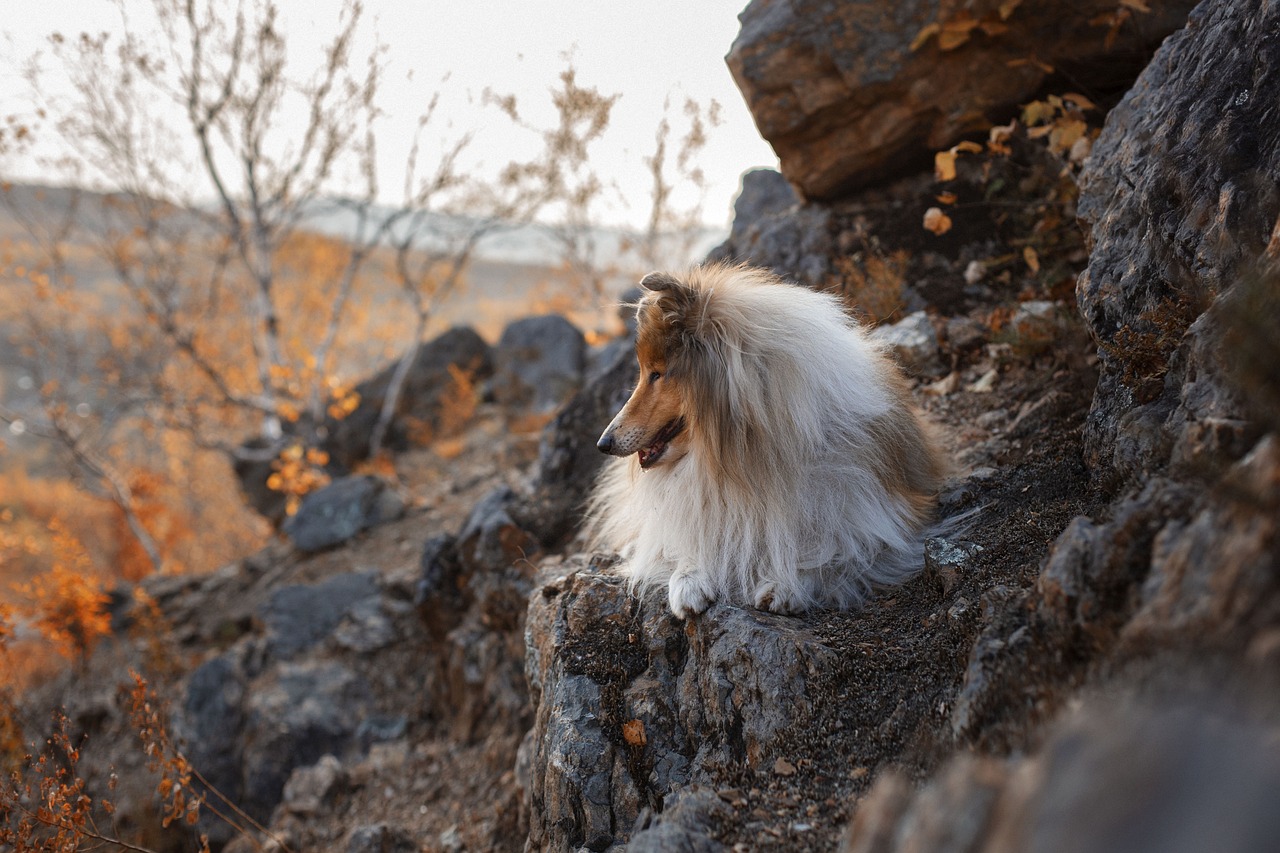
When it comes to rescue dogs, agility and physical conditioning are not just about looking good; they are about being ready for action. Imagine a dog darting through an obstacle course, leaping over barriers, and weaving through cones with the grace of a dancer. This image highlights the importance of agility training, which is crucial for rescue dogs as they often face unpredictable environments during missions. Whether it's climbing over rubble or navigating through dense forests, a dog's ability to maneuver efficiently can make all the difference in a rescue operation.
Agility training is more than just a fun activity; it enhances a dog's overall physical fitness. Just like athletes, rescue dogs need to maintain their strength, endurance, and flexibility. This is where physical conditioning routines come into play. Regular exercise not only keeps these dogs fit but also helps them develop the stamina required for long search and rescue missions. Think of it as building a solid foundation for a house; without it, everything else could come crashing down.
Incorporating obstacle courses into training is an effective way to boost agility and problem-solving skills. These courses can simulate real-life scenarios where dogs must think on their paws and adapt quickly. For instance, a dog might need to jump over a fallen tree or crawl under a low beam. Each challenge is designed to test their limits and prepare them for the unexpected. Here’s how an obstacle course might look:
| Obstacle | Purpose |
|---|---|
| Jumping Bar | Improves vertical leap and strength |
| Tunnel | Enhances confidence and problem-solving |
| Weave Poles | Boosts coordination and agility |
| Balance Beam | Develops balance and focus |
Additionally, regular physical fitness routines are essential to maintain a rescue dog's stamina and strength. Just like humans, dogs benefit from a variety of exercises to keep things interesting. This could include:
- Running: Builds cardiovascular endurance and muscle strength.
- Swimming: Low-impact exercise that enhances overall fitness.
- Fetch: Great for agility and mental stimulation.
By mixing up their workouts and incorporating agility drills, handlers can ensure that their dogs are not only fit but also mentally sharp. It's a win-win situation! Ultimately, the combination of agility training and physical conditioning creates a rescue dog that is not just capable but also confident, ready to tackle any challenge that comes their way.
Q: How often should agility training be conducted for rescue dogs?
A: Ideally, agility training should be integrated into the dog's routine several times a week, allowing for rest days to prevent injury.
Q: Can any dog become a rescue dog with agility training?
A: While many breeds can be trained for rescue work, those with natural agility and a good temperament tend to excel.
Q: What are the signs that a rescue dog is physically fit?
A: Signs include a shiny coat, good muscle tone, energy during play, and the ability to recover quickly after exercise.
Obstacle courses serve as a crucial component in the training regimen for rescue dogs, providing a dynamic environment that mimics the unpredictable conditions they may face during actual rescue missions. Think of it as a doggie gym, where our four-legged heroes can flex their muscles and sharpen their wits. These courses are designed to challenge a dog’s agility, coordination, and problem-solving skills, all of which are essential for navigating through debris or difficult terrains that may be encountered while searching for missing persons.
During training, rescue dogs encounter various obstacles that require them to jump, crawl, weave, and balance. This not only boosts their physical fitness but also enhances their mental acuity. For instance, a dog may need to leap over a series of hurdles, crawl under low barriers, or navigate through a maze of cones. Each of these tasks is not merely about physical prowess; it's about teaching the dog how to think on their feet, make quick decisions, and adapt to changing situations. Imagine a dog racing through an obstacle course, each jump and turn a testament to their training and dedication—it's a sight that can inspire anyone!
Moreover, obstacle courses can be tailored to simulate real-life scenarios that rescue dogs might face. For example, a section of the course might replicate the feel of rubble after a natural disaster, allowing dogs to practice their skills in a controlled yet realistic setting. This preparation is invaluable, as it instills confidence in the dogs and ensures they are ready to tackle the challenges of a rescue mission head-on.
In addition to the physical and mental benefits, obstacle courses also foster a stronger bond between the dog and its handler. Working together to navigate the course requires communication, trust, and teamwork. Handlers learn to read their dogs' cues, while dogs become attuned to their handlers' commands, creating a partnership that is essential in high-stakes situations. This connection is not just beneficial for training; it can be a lifesaver when the pressure is on.
To summarize, incorporating obstacle courses into a rescue dog's training routine is vital for developing their agility, coordination, and problem-solving skills. This method not only prepares them for the physical demands of rescue work but also strengthens the bond with their handlers, ultimately enhancing their effectiveness during actual rescue missions.
- What is the purpose of obstacle courses in rescue dog training? Obstacle courses help improve a dog's agility, coordination, and problem-solving skills, preparing them for real-life rescue scenarios.
- How do obstacle courses enhance the bond between dog and handler? They require teamwork and communication, allowing both the dog and handler to understand each other's cues better.
- Can any dog participate in obstacle course training? While all dogs can benefit from agility training, rescue dogs specifically are trained to handle the unique challenges posed in rescue operations.
Just like humans, rescue dogs need to maintain a high level of physical fitness to perform their best during missions. Think of it as a marathon training regimen; the more prepared they are, the better they'll handle the challenges that come their way. A well-rounded fitness routine for rescue dogs typically includes a mix of strength training, cardiovascular exercises, and flexibility workouts. By focusing on these areas, handlers can ensure their canine companions are not only fit but also agile and resilient.
One effective way to enhance a dog's physical fitness is through structured exercise sessions. These sessions can include activities like running, swimming, or playing fetch, which improve cardiovascular health while also building stamina. For instance, a simple game of fetch can be transformed into a high-intensity interval training session by varying the distance and speed. This not only keeps the dog engaged but also helps in building endurance.
In addition to cardio, incorporating strength-building exercises is crucial. This can be achieved through activities that require the dog to navigate obstacles or climb over small barriers. Agility training courses are fantastic for this, as they challenge dogs to jump, weave, and sprint, thereby enhancing their overall strength and coordination. Moreover, these courses can be adjusted in difficulty, allowing for progressive training that keeps the dog challenged and engaged.
Another aspect of physical fitness routines is flexibility training. Just like athletes, rescue dogs benefit from stretching exercises that help prevent injuries and improve their range of motion. Simple stretches can be integrated into the warm-up and cool-down phases of their workouts. For example, having the dog perform a series of stretches after a run can significantly enhance their flexibility, preparing them for the unpredictable movements required during rescue operations.
To effectively manage a rescue dog's fitness routine, handlers can create a weekly schedule that includes various exercises. Below is an example of what such a routine might look like:
| Day | Activity | Duration |
|---|---|---|
| Monday | Long Run | 30 minutes |
| Tuesday | Agility Course | 45 minutes |
| Wednesday | Swimming | 30 minutes |
| Thursday | Strength Training (Obstacle Navigation) | 40 minutes |
| Friday | Rest Day | N/A |
| Saturday | Fetch and Play | 60 minutes |
| Sunday | Stretching and Recovery | 20 minutes |
By adhering to a well-structured fitness routine, rescue dogs can build the necessary strength, agility, and endurance required for their vital roles. Moreover, these routines not only keep the dogs fit but also foster a deeper bond between the handler and the dog, creating a more effective team. After all, a fit dog is a happy dog, and happiness translates into better performance during those critical rescue missions.
- How often should rescue dogs exercise? It's recommended to have a structured fitness routine that includes daily exercise, with varying activities to keep them engaged and fit.
- What are some signs that a rescue dog is over-exercised? Signs include excessive panting, reluctance to continue activities, limping, or showing signs of fatigue. Always monitor your dog's behavior.
- Can physical fitness routines help with a rescue dog's mental health? Absolutely! Regular exercise not only keeps dogs physically fit but also stimulates their minds, reducing anxiety and improving overall well-being.

Training is not just a luxury for rescue dogs; it is a necessity that profoundly impacts their effectiveness and safety during missions. When a rescue dog undergoes proper training, it enhances not only their skills but also the bond they share with their handlers. This relationship is crucial because, in high-pressure situations, a dog that trusts its handler will perform better. Imagine a well-oiled machine where each part knows its role perfectly; that’s the synergy between a trained rescue dog and its handler during a rescue operation.
Moreover, the benefits of training extend beyond just the operational aspects. A well-trained dog is less likely to panic or become distracted in chaotic environments, which can often be the case during rescue missions. This reliability means that both the dog and handler can focus on the task at hand, ultimately leading to more successful outcomes. In fact, studies have shown that trained rescue dogs significantly increase the chances of locating and saving individuals in distress. It’s akin to having a superhero on your team—someone who not only has the skills but also the confidence to face any challenge.
Another vital aspect of training is the enhanced safety it provides for both dogs and their handlers. In rescue operations, the environment can be unpredictable and dangerous. Training prepares dogs to navigate these hazards effectively, reducing the risk of injury. For instance, a trained dog will know how to avoid sharp objects or unstable surfaces, which could otherwise lead to accidents. This is particularly important when working in situations like collapsed buildings or disaster zones, where every second counts.
To illustrate the impact of training, consider the following benefits:
- Improved Communication: Training fosters a strong communication channel between the dog and handler, allowing for quick and effective decision-making.
- Increased Efficiency: A trained dog can complete tasks faster, which is crucial when time is of the essence during rescues.
- Stronger Teamwork: The bond created through training leads to better teamwork, making the entire rescue operation more cohesive.
In summary, the benefits of training for rescue dogs are multifaceted. It enhances their operational capabilities, strengthens the bond with their handlers, and significantly increases safety during missions. A well-trained rescue dog is not just a companion; they are a vital asset in saving lives and ensuring that both dogs and handlers can work together effectively in the face of adversity.
Q: How long does it take to train a rescue dog?
A: The duration of training can vary widely depending on the dog's age, breed, and the specific skills being taught. Generally, it can take anywhere from several months to a few years to fully train a rescue dog.
Q: Can any dog be trained as a rescue dog?
A: While many breeds can be trained for rescue work, certain breeds such as Labrador Retrievers, German Shepherds, and Belgian Malinois are often preferred due to their strong work ethic and keen sense of smell.
Q: What types of training do rescue dogs undergo?
A: Rescue dogs typically undergo obedience training, scent detection training, and agility training to prepare them for various rescue scenarios.
Q: How can I support rescue dog training programs?
A: You can support these programs through donations, volunteering your time, or even adopting a rescue dog that has been trained or is in training.
When it comes to rescue operations, safety is paramount—not just for the individuals being rescued, but also for the brave dogs and their handlers. Proper training plays a crucial role in minimizing risks and ensuring that both dogs and handlers can work together efficiently in potentially hazardous environments. Imagine being in a chaotic situation where every second counts; having a well-trained dog by your side can make all the difference. Training enhances a dog's ability to understand commands and signals, which is vital in high-stress scenarios.
One of the primary ways training enhances safety is through the development of communication skills between the handler and the dog. A dog that has undergone rigorous training can respond to verbal commands and hand signals quickly, allowing for effective coordination during rescue missions. This is especially important in situations where loud noises or chaotic environments may hinder verbal communication. For instance, a dog trained to recognize specific cues can navigate through rubble or dense forests while staying close to their handler, reducing the chances of getting lost or injured.
Additionally, training prepares dogs to face various environmental challenges. Whether it's climbing over debris, swimming through water, or navigating rough terrain, a well-trained dog will have the skills necessary to adapt to any situation. This adaptability not only keeps the dog safe but also ensures that they can assist their handlers effectively. Moreover, training helps dogs develop a strong sense of confidence, which is crucial when they encounter unexpected obstacles. A confident dog is less likely to panic, which can be a game-changer in emergency scenarios.
Furthermore, safety protocols are often integrated into training regimens. Handlers learn to recognize the signs of stress or fatigue in their dogs, allowing them to make informed decisions about when to pause or redirect their efforts. This attention to the dog's well-being is essential for maintaining a high level of performance throughout long and arduous missions. In fact, regular training sessions often include simulations of real-life scenarios, helping dogs and handlers practice their skills in a controlled environment.
In summary, the safety of both dogs and handlers is significantly enhanced through comprehensive training. By fostering strong communication, adaptability, and awareness of each other's needs, training not only prepares rescue teams for the challenges they face but also strengthens the bond between the dog and handler. This bond is crucial in high-pressure situations, where trust and teamwork can ultimately lead to successful rescue outcomes.
- What types of training are best for rescue dogs?
Rescue dogs benefit from a variety of training types, including obedience, scent detection, and agility training. Each type plays a unique role in preparing them for specific rescue tasks.
- How long does it take to train a rescue dog?
The duration of training can vary widely depending on the dog's age, breed, and the specific skills being taught. Generally, it can take several months to years to fully train a rescue dog.
- Can any dog become a rescue dog?
While many breeds can be trained as rescue dogs, certain breeds like Labrador Retrievers, German Shepherds, and Belgian Malinois are particularly suited for these roles due to their strong work ethic and keen senses.
- How important is the bond between a handler and a rescue dog?
The bond between a handler and their dog is incredibly important. A strong relationship fosters trust and improves communication, which is essential for effective teamwork during rescue operations.
When it comes to rescue missions, the stakes are incredibly high. Every second counts, and the effectiveness of rescue operations can literally mean the difference between life and death. This is where well-trained rescue dogs shine. Their training equips them with the necessary skills to perform under pressure, making them invaluable assets in emergency situations. Imagine a scenario where a hiker is lost in the wilderness; a well-trained dog can locate that individual much faster than a human search team alone.
One of the key factors that contribute to better outcomes in rescue missions is the dog's ability to remain focused and calm amidst chaos. Dogs undergo rigorous training that not only hones their physical abilities but also their mental resilience. For instance, during training exercises, they are exposed to various stressful environments that mimic real-life scenarios. This exposure helps them learn how to manage stress, ensuring they can perform optimally when it truly matters.
Furthermore, the bond between a rescue dog and its handler plays a crucial role in mission success. A strong relationship built on trust and communication allows for seamless teamwork. When handlers understand their dogs' body language and signals, they can make quick decisions that enhance the effectiveness of the rescue operation. This is particularly important in situations where time is of the essence. The synergy between a handler and their dog can greatly increase the chances of locating missing persons swiftly.
In addition to the bond, the specific training techniques employed can also lead to better outcomes. For example, scent detection training enables dogs to identify and track human scents over long distances, even in challenging weather conditions. This specialized training allows rescue teams to cover larger areas more efficiently. Studies have shown that search and rescue dogs can locate missing individuals up to 30% faster than human searchers alone, showcasing the incredible impact of their training.
Moreover, the success of rescue missions often relies on the dog's ability to navigate through difficult terrains. Agility training, which includes obstacle courses and physical conditioning routines, enhances a dog's coordination and strength. This training ensures that they can traverse through rubble, dense forests, or rocky landscapes without hesitation. The ability to maneuver through obstacles not only speeds up the search process but also ensures the safety of the rescue team.
In conclusion, the rigorous training that rescue dogs undergo is not just beneficial; it is essential for achieving positive outcomes during rescue missions. The combination of enhanced skills, a strong bond with their handlers, and specialized training techniques culminates in a powerful force that can save lives. As we continue to recognize the invaluable contributions of these canine heroes, it becomes increasingly clear that investing in their training is an investment in the safety and well-being of those they are trained to help.
- How long does it take to train a rescue dog? Training can vary widely but typically takes several months to a few years, depending on the dog's age, breed, and the complexity of the tasks they will perform.
- What breeds are best suited for rescue work? Breeds such as German Shepherds, Labrador Retrievers, and Bloodhounds are often favored for their keen sense of smell, intelligence, and trainability.
- Can any dog be trained as a rescue dog? While many dogs have the potential to be trained, certain traits such as high energy, eagerness to please, and strong instincts can make some dogs more suitable than others.
- What types of rescue missions do these dogs participate in? Rescue dogs can be involved in various missions, including search and rescue for missing persons, disaster response, and even tracking down suspects in criminal investigations.
Frequently Asked Questions
- Why is training important for rescue dogs?
Training is crucial for rescue dogs as it equips them with the necessary skills to perform effectively in emergency situations. A well-trained dog can respond quickly to commands, navigate challenging terrains, and work efficiently with their handlers, which significantly enhances the chances of a successful rescue operation.
- What types of training do rescue dogs undergo?
Rescue dogs typically undergo various types of training, including obedience training, scent detection training, and agility training. Each type of training serves a specific purpose, ensuring that the dogs are prepared for the unique challenges they may face during rescue missions.
- How does obedience training benefit rescue operations?
Obedience training is foundational for rescue dogs. It ensures that they can follow commands promptly, which is critical in high-pressure situations. This type of training establishes control and fosters a strong bond between the dog and handler, enhancing teamwork during rescues.
- What is scent detection training?
Scent detection training is a specialized training that teaches dogs to locate missing persons or identify specific scents in various environments. This skill is vital for search and rescue missions, as it allows dogs to efficiently track individuals who may be lost or in distress.
- How does agility training help rescue dogs?
Agility training improves a rescue dog's physical fitness and coordination. By navigating obstacle courses and engaging in physical fitness routines, dogs become more adept at maneuvering through debris or challenging landscapes, which is essential during rescue operations.
- What are the benefits of training for both dogs and handlers?
Proper training not only enhances the capabilities of rescue dogs but also strengthens the bond between the dog and its handler. This partnership leads to better teamwork, increased safety, and improved outcomes during rescue missions, ultimately saving more lives.
- Can training minimize risks during rescue operations?
Absolutely! Training minimizes risks for both dogs and handlers by preparing them to work safely and efficiently in potentially hazardous environments. Well-trained teams are more likely to avoid accidents and make better decisions in critical situations.
- How can I get involved in training rescue dogs?
If you're interested in training rescue dogs, consider volunteering with local search and rescue organizations or shelters. Many groups offer training programs for volunteers and their dogs, allowing you to contribute to this important work while learning valuable skills.



